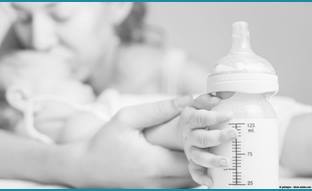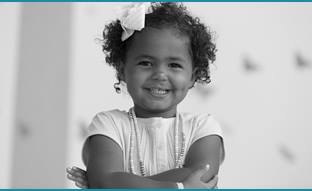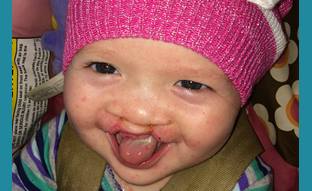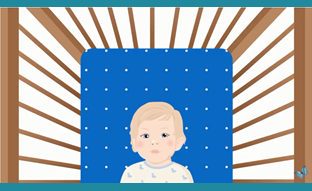Cleft Lip and Cleft Palate
A cleft lip and palate are birth defects where a baby’s lip or mouth doesn’t form properly. This can cause a gap in the lip or roof of the mouth. Doctors can fix it with surgery, and kids with this condition can lead healthy, happy lives with the right care.
What Is Cleft Lip and Palate?
A cleft lip is a split or separation of the upper lip; often involving the upper gum line as well. Clefts may affect one side (unilateral) or both sides (bilateral) of the lip. In most cases, clefts of the lip affect the tip of the nose as well.
A cleft palate is an opening or split in the roof of the mouth and may involve the soft palate alone or both the soft and hard palate. Cleft lip and cleft palate can occur together or separately.
Cleft lip and/or palate is the most common birth defect in the United States, affecting one of every 700 babies born. That means on average, 16 babies are born every day in this country with a cleft. Clefts of the lip and/or palate occur early in pregnancy, during the first trimester, as a result of the failure of the separate parts of the lip and palate to come together during development.

What Causes Cleft Lip and Palate?
A variety of factors can increase the risk of a baby being born with a cleft lip or palate. Prenatal exposure to alcohol, cigarettes and other medications and drugs increases the risk. In most instances, there is no single explanation. Instead, a combination of many factors is the usual cause. In some cases, clefts occur as part of a genetic syndrome that often includes other birth defects.
If your child has a cleft, a geneticist’s evaluation can determine if the cleft is isolated or part of an underlying syndrome. In most cases, cleft lip with or without cleft palate as well as isolated cleft palate occur alone and are believed to be due to multifactorial causation. This means that a variety of both genetic and non-genetic factors work together to result in a cleft.
Although cleft lip with or without cleft palate can occur in any race, there is a higher incidence in people of Asian, Native American or Hispanic descent. There is a lower incidence in African-American individuals.
DOES YOUR CHILD NEED TO BE SEEN BY OUR EXPERTS?
Use our secure online form to request an appointment or get a second opinion. An appointment scheduler will contact you by phone within 24 hours.
How Is Cleft Lip and Palate Treated?
Treatment begins at birth and continues into early adulthood. Clefts are not just a facial difference – they may also have profound effects on a child’s feeding, speech, hearing, dental development, facial growth and psychosocial well-being. Because of this, children born with cleft lip and/or cleft palate are best cared for throughout their development by a multidisciplinary team of specialists.
Since a cleft of the lip can sometimes be detected on fetal ultrasound, the team should meet the family before birth to discuss the care of their baby. For many parents, their child’s facial difference is discovered at birth. Since infants with cleft palate are usually unable to breastfeed or to use standard bottles, the team will introduce one of several specialized feeding systems to ensure the baby gets a good start by feeding well and growing appropriately.
After the baby is born and evaluated, surgeons create an individualized treatment plan for the infant and family. In some cases, the cleft will be prepared for surgery through a non-surgical process known as pre-surgical infant orthopedics. A cleft of the lip is usually repaired in one or two steps within the first six months of life.
Clefts of the palate are usually repaired before the baby’s first birthday to ensure that speech develops normally. In the years that follow, a comprehensive team works closely with each family and their child to ensure optimal facial appearance, normal speech, strong self-esteem, and the best possible quality of life.
Next Steps
From infancy to school age, adolescence, early adulthood and beyond, care needs change as your child grows. At Nationwide Children's Hospital we are committed to providing the best care and quality of life throughout all stages of life.
For Expectant Parents With a Prenatal Diagnosis
Our expert team of fetal medicine specialists is here to guide and support you each step of the way.
For Parents of Children and Newborns
The Cleft Lip and Palate Center is leading the way in providing high quality care for children diagnosed with cleft lip and cleft palate.
Click here to learn more about the Cleft Lip and Palate Center.





